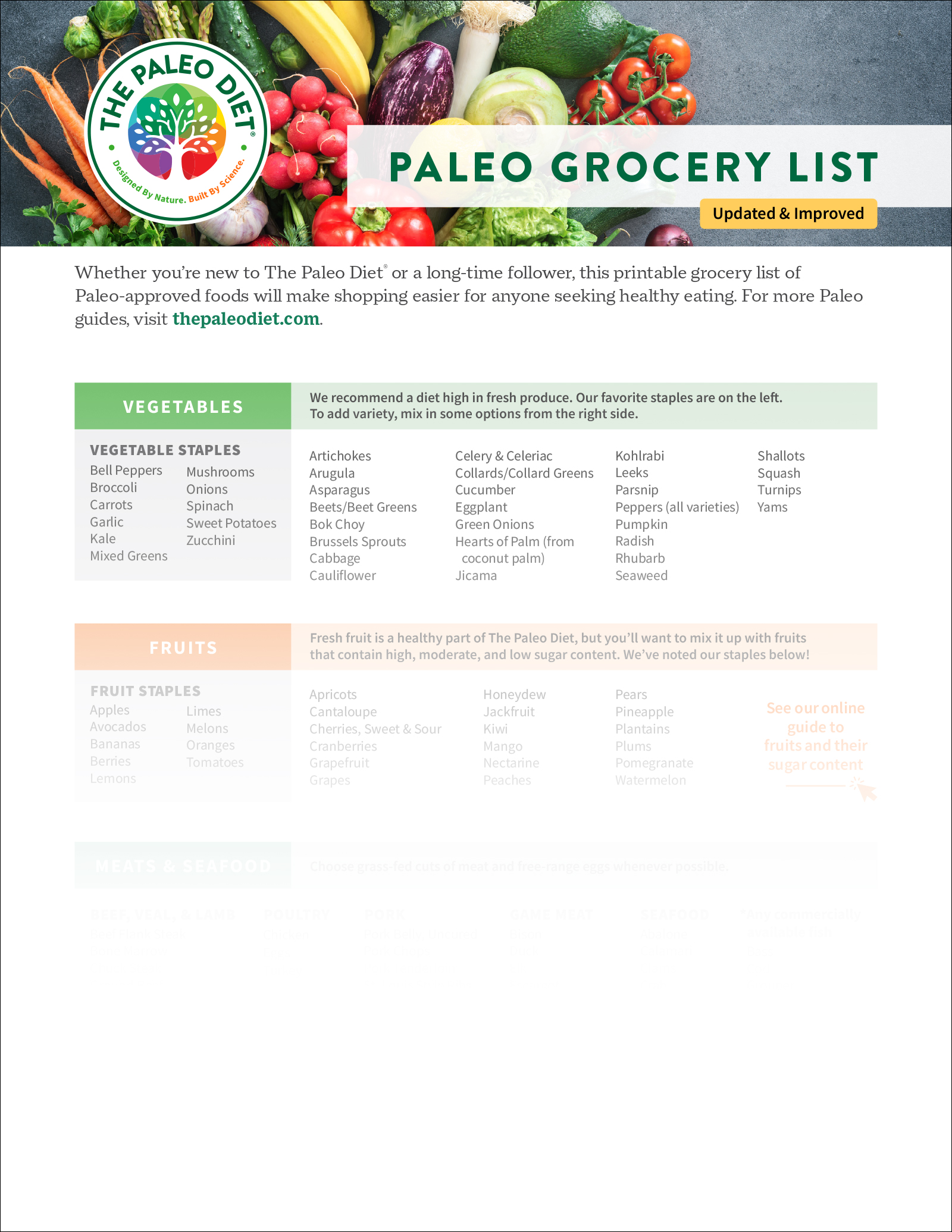The Hidden Cost of Food Waste—and How to Change It

Imagine walking out of the grocery store, dropping one out of every three bags of food straight into the trash, and driving away. That’s essentially what happens every day in the U.S., where more than one-third of all food produced never gets eaten.1,2 But food waste isn’t just about discarded meals—it’s a massive drain on resources. The water, energy, and labor that go into growing, transporting, and preparing food are all wasted when that food ends up in the trash.
Food waste is also the largest contributor to landfills and incinerators, making up nearly a quarter of all municipal waste.3,4 But the problem runs deeper than overflowing garbage bins—it affects food security, strains the economy, and accelerates climate change. If we reduced food waste, we could help feed more people, conserve vital resources, and cut harmful emissions.
The good news? Small changes in how we shop, store, and use food can have a big impact. By being more mindful about waste, we can all play a role in creating a more sustainable food system.
How Big Is the Problem?
Food waste is a massive and growing issue with serious environmental, economic, and social consequences. According to the EPA, in 2019, the U.S. generated a staggering 66 million tons of food waste from grocery stores, restaurants, and households—60% of which ended up in landfills. Another 40 million tons came from food and beverage manufacturing.
On a global scale, the United Nations estimates that nearly 13.2% of food is lost between harvest and retail, while another 19% is wasted at the household, food service, and retail levels. Together, that’s nearly one-third of the world’s food supply that goes uneaten, contributing to greenhouse gas emissions, wasted resources, and food insecurity.5,6
Where Food Waste Happens
Food isn’t just wasted at home—it’s discarded at every step of the supply chain:
- On Farms: Farmers may throw out perfectly edible fruits and vegetables simply because they’re too big, too small, or slightly misshapen—even though they’re just as nutritious.
- At Grocery Stores: Retailers remove products nearing expiration, even when they’re still safe to eat.
- In Restaurants and Households: Food spoilage and large portion sizes leading to uneaten leftovers contribute to waste.
Households, however, are the biggest source of food waste, with Americans throwing away an estimated 325 pounds of food per person each year.1 And when food is wasted, so are the resources that went into producing it.
The Environmental Impact of Food Waste
Food production is one of the most resource-intensive industries in the world, and when food is wasted, so are the resources used to grow, harvest, transport, and prepare it.
- Water: Nearly a quarter of all freshwater use in the U.S. goes toward food that is never eaten—wasting billions of gallons that could support agriculture and drought-stricken communities.7
- Land: Agriculture already occupies 11.5 million hectares globally, with another 900 million hectares used for livestock grazing. As demand for meat grows, deforestation, habitat destruction, and soil depletion increase, further reducing the land’s ability to sustain future crops.8
RELATED: The Environmental Impact of Food
A Major Contributor to Climate Change
When food decomposes in landfills, it releases methane, a greenhouse gas over 80 times more potent than carbon dioxide over a 20-year period.9 The short time frame matters: while methane doesn’t stay in the atmosphere as long as CO2, it packs a much bigger punch in the years immediately after it’s released, making it a key driver of near-term climate change—the kind of warming we’re already experiencing today.10 Discarded food is the largest category of landfill material in the U.S. and is responsible for 8–10% of global greenhouse gas emissions.
If food waste were a country, it would rank as the third-largest emitter in the world, behind only the U.S. and China.11Cutting the amount of discarded food in half could reduce annual greenhouse emissions by 1.5 gigatons.
The Ripple Effect on Ecosystems
Food waste also harms entire ecosystems:
- Overfishing: Marine life is under stress, but much of the fish caught globally is discarded for failing to meet market standards. This disrupts aquatic food chains and threatens food security for millions who depend on fish as a primary protein source.
- Biodiversity Loss: Clearing forests for food production destroys natural habitats, pushing many species toward endangerment and extinction. The conversion of wild landscapes into farmland not only reduces biodiversity but also reduces the planet’s ability to absorb carbon emissions.
The Social & Economic Impact of Food Waste
In classrooms across the U.S., teachers often reach into their own pockets to buy snacks for students who come to school hungry. One survey found that nearly 80% of K–12 teachers have done this because food insecurity isn’t just an abstract issue, it affects families every day.12
At the same time, while millions struggle with food insecurity, vast amounts of edible food are wasted. Over 44 million people in the U.S., including more than 13 million children, lack consistent access to nutritious meals.13-15
The Cost of Food Waste
Food waste isn’t just an environmental issue—it hits our wallets, too:
- Households: The USDA estimates that the average American household throws away about $1,500 worth of food each year.16
- Businesses & Farms: Grocery stores, restaurants, and farms often discard surplus food due to strict cosmetic standards, overproduction, or logistical hurdles, driving up food prices.
Some retailers are already proving there’s a better way.
“At Esh’s, we sell top-quality brands—many found only in high-end grocery stores—for 30% to 60% less than retail by purchasing food that is overstock or nearing printed expiration dates,” says Reuben Esh, CEO. “In Colorado alone, our model prevents 10.5 million pounds of food and household merchandise from entering the landfill annually. From what doesn’t sell, we donate more than 300,000 pounds of food and needed items to local charities yearly.”
Reducing food waste could significantly lower costs for families, businesses, and local governments—and models like Esh’s show that it’s not only possible, but profitable.
What Can You Do?
Reducing food waste starts at home, and even small changes can make a big impact. By shopping smarter, storing food properly, and getting creative with leftovers, you can cut down on waste and help build a more sustainable food system.
Buy Less, Save More: Smart Shopping Tips
One of the biggest contributors to food waste is buying more than we need. Before heading to the store, take inventory of what you already have, plan meals accordingly, and make a list to prevent impulse purchases.
“Americans tend to overbuy food,” says Robert Egger, food activist and founder of DC Central Kitchen. “Unlike Europeans, who often shop for what they need each day, we fill oversized refrigerators with food we might want, then forget about it until it spoils.”
Quick tip: Don’t assume food is bad because the date has passed. Sell-by and best-by dates are guidelines, not safety cutoffs. Many foods are still perfectly fine to eat beyond these dates. Trust your senses before tossing anything.
Make Your Food Last Longer: Storage Tips
Proper storage can significantly extend the life of your food.
- Keep perishables like dairy and meat in the coldest part of the fridge.
- Store nuts and snacks in airtight containers.
- Freeze leftovers, bread, and produce before they go bad—most foods freeze well for months!
Need help tracking freshness? Tools like the USDA FoodKeeper app can help you understand how long different foods last and how to store them properly. You can also explore digital tools like FoodDocs or Safe Food Pro, which offer reminders and shelf-life tracking to help reduce waste before it starts.
Turn Scraps into Something Delicious
Instead of tossing out extra ingredients, find ways to repurpose them. A blended bowl, as Egger calls it, is an easy way to use up odds and ends, mixing proteins and vegetables into a single dish. “Back in the day, our mothers would make four meals out of a single roast,” he says. “We’ve moved away from that mindset, but it’s time to rethink how we use food,” he continues.
- Wilted greens? Toss them into a smoothie or soup.
- Overripe bananas? Freeze them for baking or homemade ice cream.
- Blemished apples? Perfect for applesauce.
Compost What You Can
Even with the best efforts, some food waste is inevitable. Composting scraps—like vegetable peels and eggshells—keeps them out of landfills and returns nutrients to the soil.
“The public is eager to compost, but many cities haven’t caught up with infrastructure,” Egger notes. “The key is making it accessible.”
Support Food Recovery Efforts
While individual action is important, systemic change is also needed. Organizations like Feeding America, City Harvest, and Food Rescue US work to redirect surplus food from farms, grocery stores, and restaurants to people who need it most.
Want to get involved?
- Donate excess food to a local food pantry.
- Volunteer with a food recovery program.
- Advocate for policies that promote redistribution instead of waste.
And don’t forget where your food comes from. Supporting farms that practice regenerative agriculture—methods that restore soil health, capture carbon in the ground, and reduce reliance on chemical fertilizers and pesticides—is another way to create meaningful change. When we pair food recovery and waste reduction with farming practices that help restore the land, we move closer to a more sustainable food system.
Reducing food waste isn’t about perfection—it’s about making small, mindful choices that add up over time. By being more intentional with what we buy, how we store it, and how we use it, we can cut waste, save money, and help create a more sustainable food system.
References
- Buzby, J. (2022, January 24). Food Waste and its Links to Greenhouse Gases and Climate Change. Usda.gov. https://www.usda.gov/about-usda/news/blog/2022/01/24/food-waste-and-its-links-greenhouse-gases-and-climate-change
- FAO. (2015). Food wastage footprint & Climate Change. https://openknowledge.fao.org/server/api/core/bitstreams/7fffcaf9-91b2-4b7b-bceb-3712c8cb34e6/content
- Environmental Protection Agency. (November 2021). From Farm to Kitchen: The Environmental Impacts of U.S. Food Waste. US EPA. https://www.epa.gov/system/files/documents/2021-11/from-farm-to-kitchen-the-environmental-impacts-of-u.s.-food-waste_508-tagged.pdf
- United States Environmental Protection Agency. (2015, August 12). Wasted Food Scale. Www.epa.gov. https://www.epa.gov/sustainable-management-food/wasted-food-scale
- Environmental Protection Agency. (2017, September 12). Food: Material-Specific data. US EPA. https://www.epa.gov/facts-and-figures-about-materials-waste-and-recycling/food-material-specific-data
- World Food Programme. (2024, June 25). 5 facts about food waste and hunger | World Food Programme. Wfp.org; World Food Programme. https://www.wfp.org/stories/5-facts-about-food-waste-and-hunger
- Weiling. (2017, August). Food Waste. Water Footprint Calculator. https://watercalculator.org/posts/food-waste/
- Food Waste and its Impacts on the Environment. (2021, January 27). Avris Tech. https://www.avristech.com/food-waste-impacts-on-environment/
- Environmental Protection Agency. (2023, November 1). Importance of Methane. US EPA. https://www.epa.gov/gmi/importance-methane
- EPA. (2023, April 18). Understanding Global Warming Potentials | US EPA. United States Environmental Protection Agency. https://www.epa.gov/ghgemissions/understanding-global-warming-potentials
- Lewis, J. (2022, October 17). How Does Food Waste Affect the Environment? Earth.org. https://earth.org/how-does-food-waste-affect-the-environment/
- Hunger Matters for Students. (2025). https://assets.ctfassets.net/irplh84t0tdt/5N3SLqZG2QHTuzfwvAzade/a42b575f591f3d7ecedd54a5a2b6defe/Hunger_Matters_for_Students_Report__EXTERNAL___1_.pdf
- Household Food Security in the United States in 2022 | Economic Research Service. (2022). Usda.gov. https://www.ers.usda.gov/publications/pub-details?pubid=107702&v=7814.4
- Feeding America. (2023). Hunger in America. Feedingamerica.org; Feeding America. https://www.feedingamerica.org/hunger-in-america
- Divert, I. (2025, January 17). The Cost of Wasted Food | Divert. Divert. https://divertinc.com/the-cost-of-wasted-food/
- Buzby, J. (n.d.). Consumers. Usda.gov. https://www.usda.gov/foodlossandwaste/consumers
Maureen Farrar
Maureen Farrar has spent more than 20 years as a writer and editor for several print and digital outlets. She writes about health, fitness and nutrition.
More About The Author




